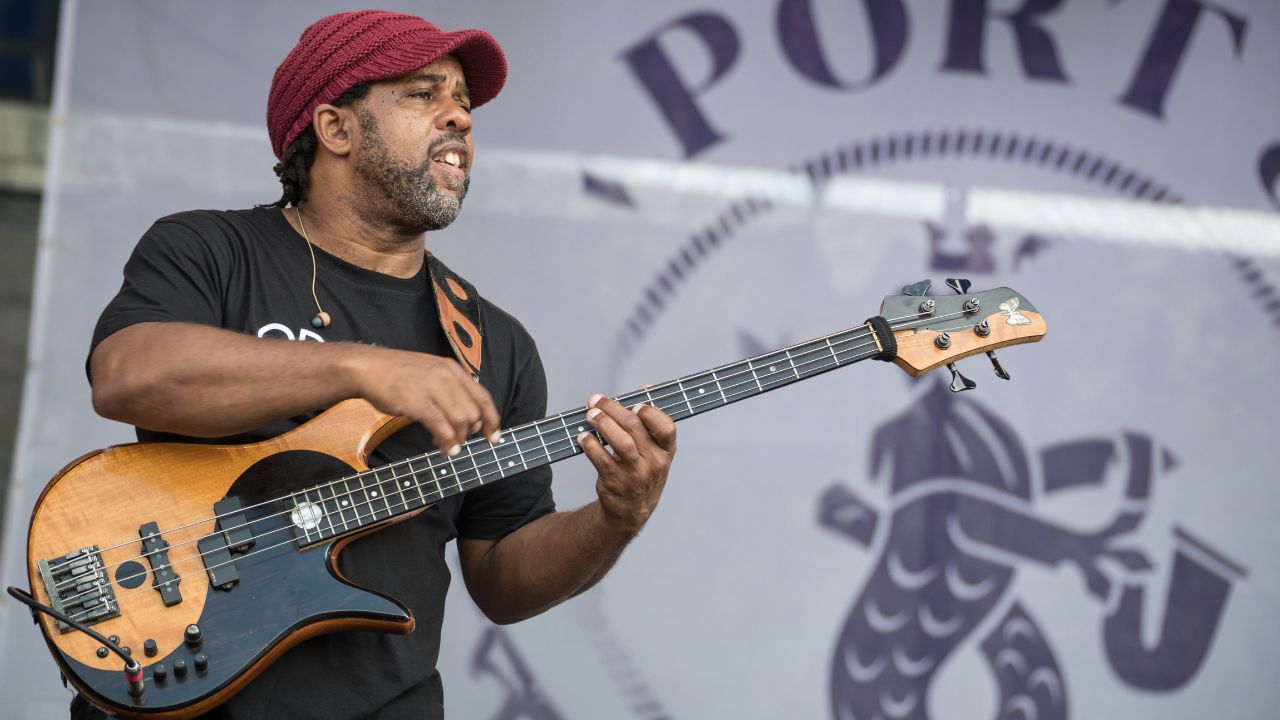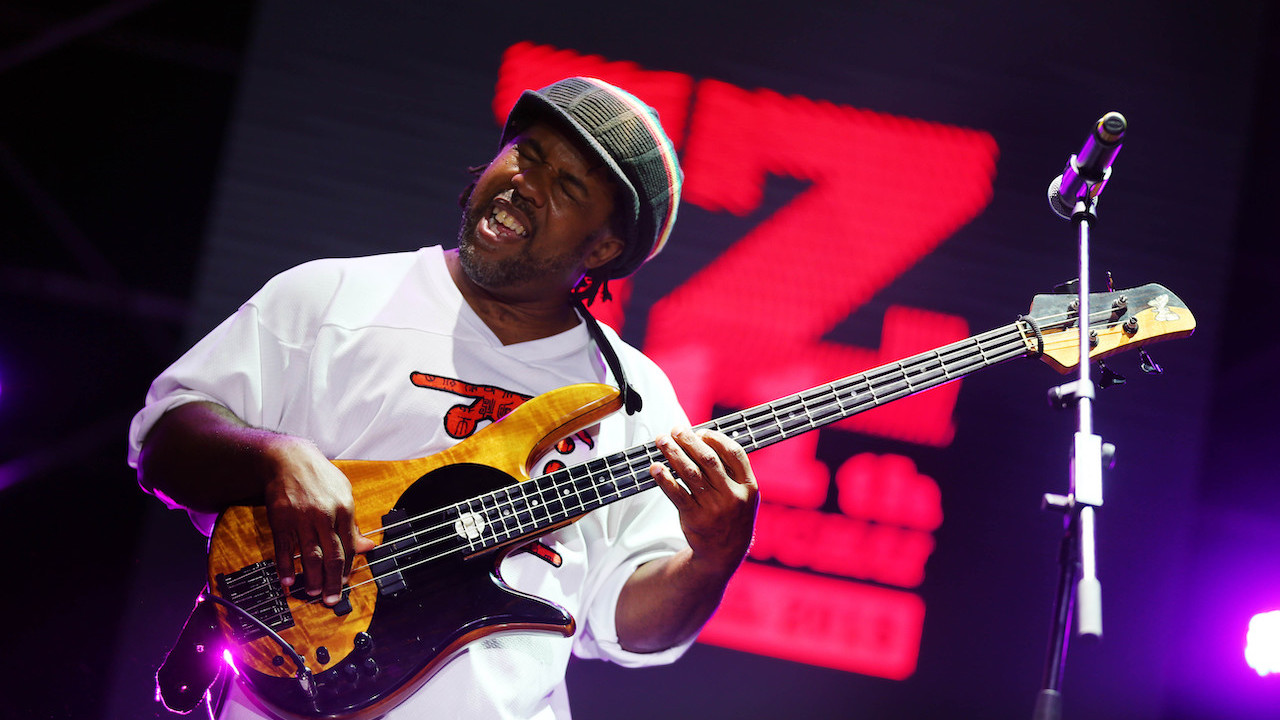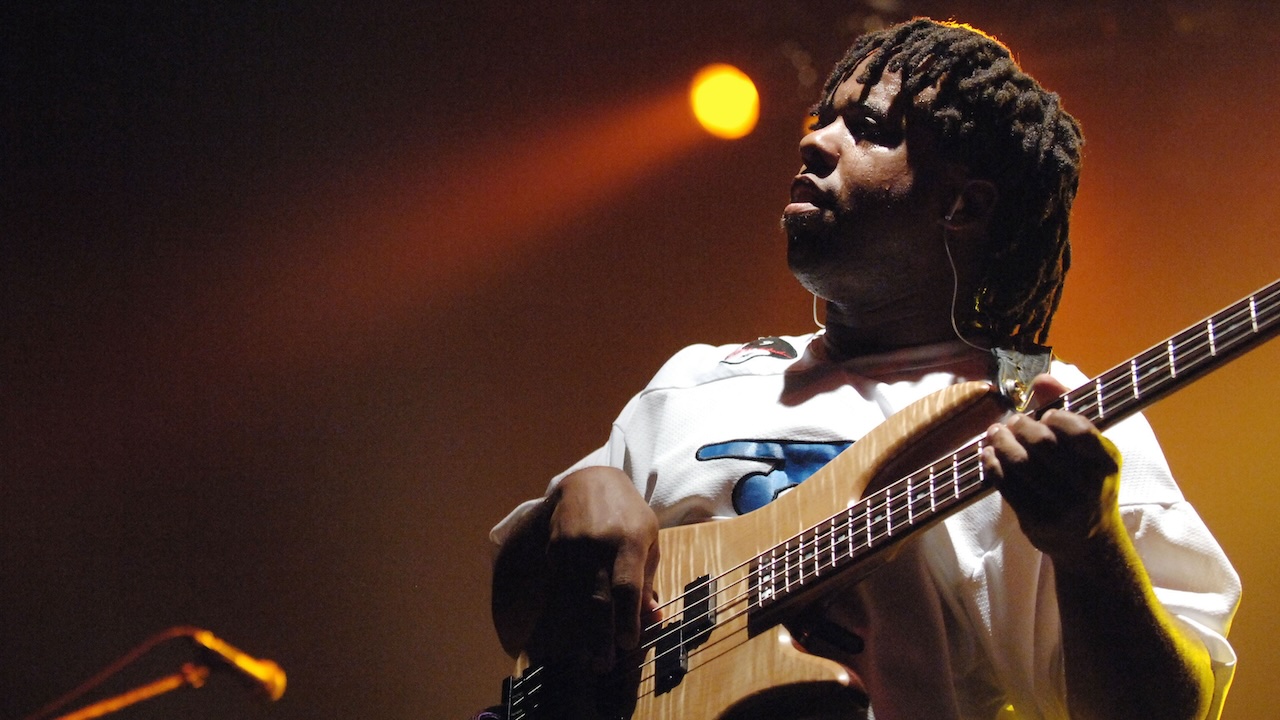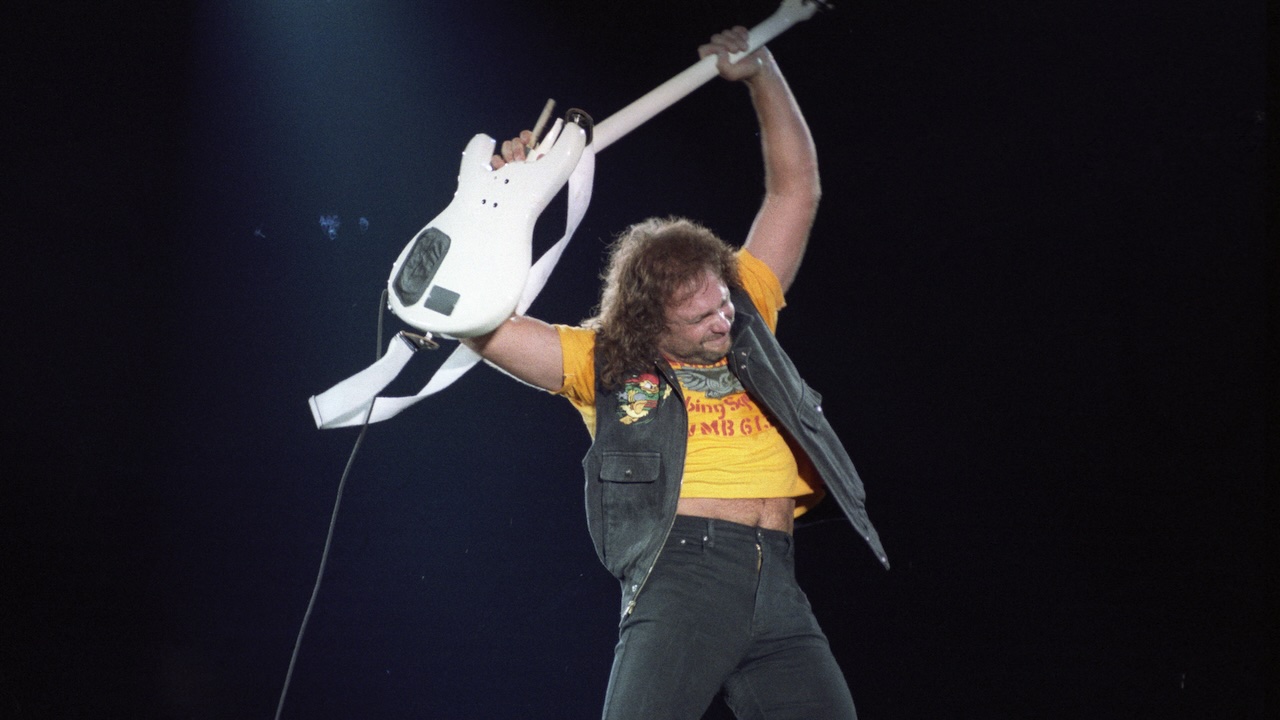“I have a hair tie around the nut of my bass, and I pull it up to the 17th fret”: Just when we thought he’d settled into his routine as a bass superhero, Victor Wooten pulls out another surprise: a 25-cent hair tie?
Victor Wooten reveals the “secret” technique that makes his bass solos “pop with screaming harmonics”

Record company owner, songwriter, producer, book author, magician, acrobat, naturalist... oh, and a wonderful bassist, too. Victor Lemonte Wooten has certainly packed in the adventures in a life that began on 11 September, 1964 in Mountain Home, Idaho.
Wooten's debut solo album, A Show of Hands, was recorded with only a four-string bass guitar; a love letter to the instrument, it's considered to be a seminal release. But that was just the first set for one of the most profound and influential bass heroes.
His 1997 side What Did He Say? revealed the considerable musical depth behind the double-thumbing and countless other techniques he innovated, while things really kicked up a notch in 2012 when Wooten set out to embrace the singer/songwriter realm.
On Words and Tones, one of two simultaneously released albums on Vix Records, he featured no fewer than nine female vocalists delivering originals (and a few covers) that encompass funk, folk, pop, jazz, R&B, rap, and Latin genres, all without losing the memorable weight of their hooks.

Yin to Words and Tones’ yang is Sword and Stone – derived by moving the letter S in both words of the former's title. It's a high-caliber instrumental take on the vocal tunes. The 28 songs en masse cast Wooten's basses in head-shaking new sonic roles that only he can conceive of and deliver.
“My bass solos incorporated my hair-tie technique,” he told Bass Player. “I always have a hair tie around the nut of my bass, and I pull it up to around the 17th fret while playing around the 8th fret. That makes some of the notes pop out with screaming harmonics – I do it on Sword and Stone, Say Word and It's All Right.”
The following interview from the Bass Player archives took place in February 2013, with Wooten taking a break from his East Coast tour.
All the latest guitar news, interviews, lessons, reviews, deals and more, direct to your inbox!
What led to your two-album concept?
“My original idea was to do an album featuring female vocalists, because listening to a great female vocal performance has always been at the top of the musical food chain for me. But as I was recording demo tracks for the vocalists, I would play the melodies on bass, and I realized I liked the songs as instrumentals, too.
“So, having my own label, I got to fulfil a longtime dream of having two separate albums come out on the same day. I wanted to make each one different, knowing they were going to have a lot of the same material, so I recorded different solos and changed the arrangements and instrumentation.”
Did you view the instrumental album as more of a bass disc, and how did you handle the challenge of interpreting the songs instrumentally?
“I didn't view either disc as a bass showcase. Over the last few years the prime focus of my projects has been the music; these albums are all about the songs. If there was a certain melody or lyric I wanted to highlight on the instrumental version, I would frame it to stand out by doubling it, or via the groove, or by putting an open break in, as I did on A Woman's Strength.”
“It's funny; I've been asked which one to listen to first – assuming I'll be blessed by fans who buy both. It's an individual choice, but Words and Tones is how the songs were originally conceived.”
Your layering of basses gives both albums a unique sound.
“The layered basses make me feel like the music is my own. But I'm not doing it to be clever or showy. It just so happens I play bass better than anything else, so that's the fastest way to get my ideas from my head and heart to tape. If I had to sit there with my limited keyboard skills and punch one chord at a time, it would pull me away from the creative process. I have all of my different range basses around me, and I plug them in and throw down the parts.
“What I mainly need to be aware of is the tracks can sound a little lower in range than folks are used to hearing. So in some cases I'd add a high line on keyboard or my Bassimer to balance it out; having the female vocalists helps there, as well. Other than that, the only issue is to be in time and in tune, but often I like the tension created by the basses not being perfectly in tune with each other.”
Sword & Stone seems to be a signature piece; it certainly has signature solos on both versions.
“That song was pivotal; it was the very first one I worked on, and it was supposed to be a mellow Joni Mitchell/Jaco type of piece. But I found this amazing double-time Indian clay pot loop on Pro Tools that I couldn't resist, and it put me in a whole new frame of mind for the song and the album, which was supposed to be like Joni's Shadows and Light album.
“Here, I used my tenor bass with a little distortion and flanger, and I just played whatever came into my head, loosely keeping in mind the root of the first chord in the two-chord progression.
“I've come to realize that when I play in the range of a guitar or horn – which sits on top of the music – I can get away with anything note-wise. You can't do that on the low end; the frequencies are too wide, and they vibrate too slowly, to play ‘out' when soloing in that register.
“Another key when playing ‘out' up high is having good time and phrasing, because people don't only listen with their ears, they feel with their bodies.”

Hope, Merlin, and Keep It Low from Sword and Stone are the most bass-centric tracks.
“I had some instrumental tunes I wanted to use, but I couldn't get them off an old computer, so I literally wrote and recorded Hope and Merlin the morning before I went to master the albums.
“Hope is a solo chordal piece on my stereo tenor bass, with me rolling tape, trying ideas, and then reacting and adding to those ideas. Merlin is from a loop-pedal feel that I sang into my iPhone. I recorded the bottom part and then added about six more parts on top. For the lead solo, I applied some altered scales I learned from keyboardist Steve Weingart.
“Keep It Low started as a groove we used to play in my Soul Circus band, and I recorded it to remember it. When summer NAMM started in Nashville, I would grab whoever was in town – Bill Dickens, Oteil Burbridge, Kai Eckhardt – and have them come over and play once through the track.
“For this project, I took all 11 guest contributions and flew them at different times, all around the track; then I added a crazy solo using my stereo bass panned across the spectrum, with the effects changing from right to left.”
Your use of strings – including your playing cello and viola – is a key sonic component, especially on A Women's Strength and Love to Hear U Laugh.
“I've always loved the sound of real strings; the grit of the bow, the hair across strings. Laugh was the first cello song I recorded, and it had been three years since I played, so there was some pain and plenty of Pro Tools takes involved. I doubled the melody on viola for a different sound, but I played it vertically in my lap, like a cello, because I had better control and tone that way. My friend Kelly Ellis also played cello on Women's Strength.”
Groove-wise, what stands out is your tumbao-like part on Love Is My Favorite Word, and Heaven, where your bass provides the track's feel.
“All of those are played on my Fodera N.Y.C. 5, with heavier-gauge strings and higher action. The tumbao on Love isn't authentic; I don't know clavé, so it's just me playing what I wanted it to feel like. I hope I didn't offend any cultures!
“Heaven is a tribute to lost family members. Aside from the solo section, in which my brothers Joseph, Regi, Roy, and I each start with the last line from the previous solo, the song is really just the bottom bass and the chordal bass on top. The bouncy, sort of double-timey bassline just happened; I wanted to keep an upbeat side, given the solemn content.”
Chris Jisi was Contributing Editor, Senior Contributing Editor, and Editor In Chief on Bass Player 1989-2018. He is the author of Brave New Bass, a compilation of interviews with bass players like Marcus Miller, Flea, Will Lee, Tony Levin, Jeff Berlin, Les Claypool and more, and The Fretless Bass, with insight from over 25 masters including Tony Levin, Marcus Miller, Gary Willis, Richard Bona, Jimmy Haslip, and Percy Jones.




